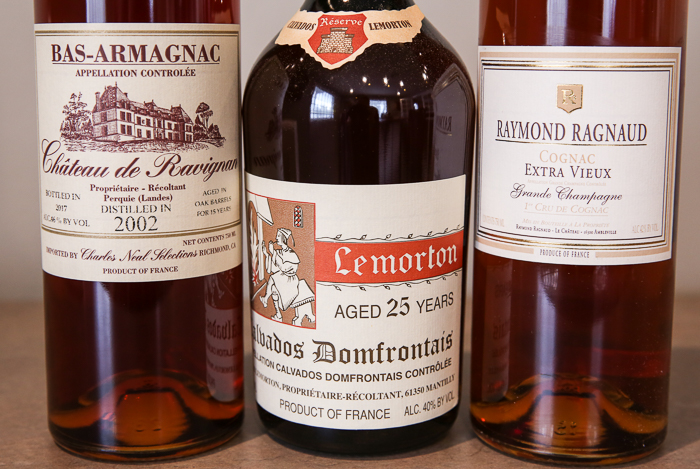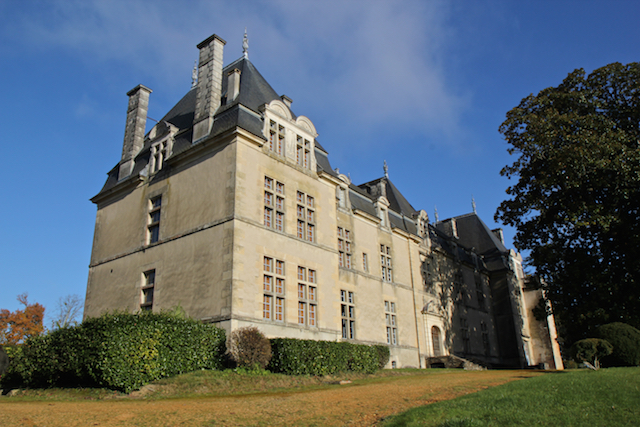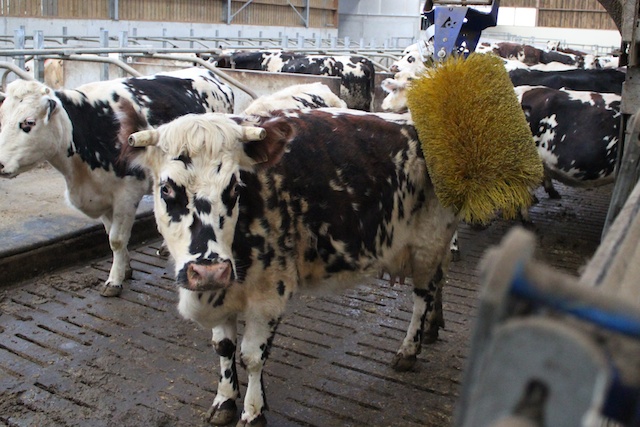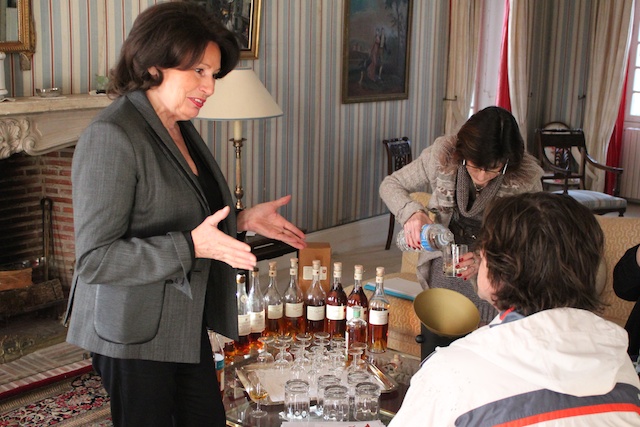French Accoutrements

Since we're getting into the holidays and people are out there looking for something new, different, or outside the spectrum of what's usually available, I've got three new French spirits to show you today—one from Armagnac, one from Calvados, and one from Cognac. All three are from producers you might recognize, but they're not standardly available on the American market, which is why I've brought them in just in time for Thanksgiving. I'll give you the quick rundown on each.

It’s sometimes easy to forget that the United States is a young country when compared to the rest of the world. For us Americans, a couple hundred years is pretty much the entire length of our nation’s history. For some French citizens, however, it’s merely half the age of their house. Take Chateau de Ravignan for example—a property in Gascony that dates back to the 12th century. The current house on the estate only dates back to 1663 because the original was burnt down in 1565, a hundred years earlier. There was strife back then between the Huguenots and the Catholics, and the Chateau was torched during a time when Jeanne d’Albret—the mother of King Henry VI—was caught helping the French re-appropriate land back from English territory. Surrounding the 350 year old maison are vineyards, work sheds, servant quarters, and a few warehouses full of aging brandy. In the middle of all this history, Chateau de Ravignan continues to make Armagnac today, just as it has for generations.

Distillation of eau de vie at Chateau Ravignan dates back officially to at least 1791 during the French Revolution, but by historical account back to 1731. That’s when the ancestor of Josselin de Ravignan purchased the estate and declared on an official record that some of wine made from the property’s grapes would be used for distillation. At that time, however, it wasn’t known as Armagnac. Distilled spirits were used for a number of medicinal purposes, poured into wine for fortification, and given to sailors to help disinfect their water supplies during long journeys. Today Josselin is bringing Ravignan into a more modern era. When he’s not faithfully carrying on the family tradition with his father Louis and aunt Cristine d’Orglandes, he’s shaping surfboards and hitting the waves at the nearby Atlantic Coast. I've spent hours in the basement there, tasting through samples in the nearby chai (the French word for an above-ground cellar). Louis pulled the ancient documents from the Chateau’s library so we could see the original records. They keep 350+ year old records like this on hand in France. Again, no big deal.
No one in Gascony gets caught up in the age statements of their brandies or the opinions of heralded critics. They respect the conditions that create great spirits and they strive for quality with respect for their history, but it never seems to come at the expense of a good time. “Do you watch bull fighting?” Josselin asked me once. “There are people who go to watch the fight, have some drinks, and just enjoy the experience. Then there are other people who overanalyze everything about the sport and who are upset when the fight is not good.”
“That sounds a lot like some of today’s wine and spirits customers,” I laughed in response.
“It is important to appreciate the beauty and the form of bull fighting, but there is a point when appreciation comes at the expense of enjoyment. That’s something that I’ve learned over time,” he said. When you’ve had 700+ years to put things into perspective, it’s probably a bit easier for the people of Gascony to take things in stride. I snagged this 2002 Vintage expression from our last visit. It reminded me of everything I love about Folle Blanche for a reasonable price:
Chateau de Ravignan 15 Year Old Folle Blanche Armagnac $69.99 - The 2002 Folle Blanche translates the spicier and more nuanced flavors of the testy grape beautifully into the bottle. Lots of brown sugar, baking spices, and sweet oak, a la a great Kentucky Bourbon. There's a cinnamon red hot finish that lasts for a full minute. Usually we pay a premium for the FB, but here the price is quite reasonable. Josselin's family has been distilling at the same property since the mid-1700s, so it's clear they know what they're doing! This is an under-the-radar value for those looking to try something different.

Didier and Martine Lemorton have a wonderful farm. About one hundred cows fill their barn and orchards of pear and apple trees surround it. You can tell a lot about their lifestyle by shaking their hands. Their palms are hard and calloused from the hard manual labor they perform on a daily basis. They've never been on an airplane and they've never had a day off. They don't have a still (most producers use a traveling still and hire someone to bring it), but they have tons of fruit and that produce needs to be preserved. Distilling it into brandy and then aging it in oak barrels is the best way to do so. Their fruit also happens to be quite excellent, which translates into excellent Calvados.

Located in the Domfrontais appellation of Calvados, their cepage must be at least 30% pear, although they choose to make brandies with about 60% pear and 40% apple. In Calvados, the fruit is not picked, but rather gathered only after it falls to the ground. After they're collected, the apples and pears are loaded into a machine that works like a wood chipper. Apples cannot be pressed or squeezed whole like grapes, but rather must be chopped into tiny pieces before juicing can take place. Once the juice is collected, Didier ferments it inside large wooden barrels because that was the way his father did it. He has considered updating to stainless steel, but it's a large expense and his traditional methods seem to have worked so far.
Lemorton 25 Year Old Domfrontais Calvados $129.99 - This 25 year limited edition is a dark amber color in the glass with aromas of hard cider and oak. The palate is rich with weight and the apple flavor is still very fresh and lively. There's an oakiness from the age, but the quality of the fruit stands up over more than two decades. For the serious Calvados drinker.

The original Ragnaud Cognac was produced by the Ragnaud family, but when the two brothers Raymond and Marcel took over they were unable to work together. The Domaine split and now there are two separate brands under the name of each brother. Raymond Ragnaud is still produced on the original estate and is now overlooked by his daughter, Mrs. Ragnaud-Bricq pictured above.

The distiller Jean-Marie has spent the last thirty years perfecting his pot-still brandies into delicate expressions of the fantastic terroir in the area. He is a firm believer in the idea that the limestone-rich soils of Grande Champagne produce wines that, when distilled, create brandies capable of aging in barrel for eternity. While we originally came in search of single-barrel Cognac, we tasted a few out of the cask and soon realized that Grand Champagne Cognac doesn't taste all that great in its youth—and by "youth" I mean anytime in the first 20 years of its life—nor does it taste too great out of the barrel. Usually the blends have more complexity because the expressive "young" brandy is balanced with the richness from older vintages.
Raymond Ragnaud Extra Vieux Grande Champagne Cognac $99.99 - This Extra Vieux (25 year old) was our favorite of the expressions, exhibiting beautiful concentration and the elegance we've come to expect from world-class Cognac producers. Gentle richness on the entry leads into flavors of toasted nuts, stone fruit and vanilla, before finishing with a soft dash of baking spices. A masterful Cognac that managed to seduce us with subtlety and style, rather than with sweetness and weight.
-David Driscoll
